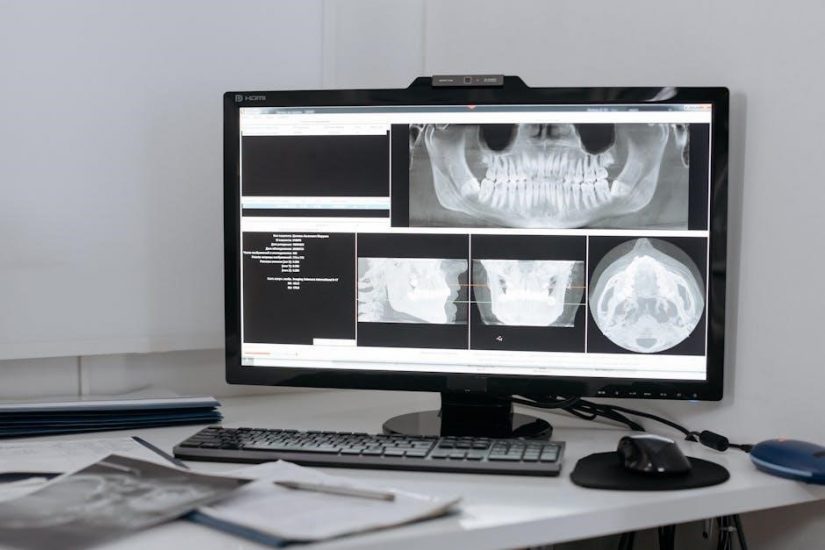The Multi-Engine Oral Exam Guide is a comprehensive resource designed to help pilots prepare for the FAA checkride, covering critical topics like Vmc, engine failures, and performance factors. It serves as an essential tool for both initial certification and recurrent training, ensuring a thorough understanding of multi-engine operations and safety protocols. PDF versions are widely available for convenient study.
1.1 Overview of the Guide
The Multi-Engine Oral Exam Guide provides a structured approach to preparing for the FAA checkride, focusing on key areas such as aircraft performance, engine management, and emergency procedures. It uses a question-and-answer format to address common examiner inquiries, ensuring pilots are well-prepared for the oral exam. The guide is tailored for private, commercial, and ATP candidates, offering clear explanations of complex topics like Vmc and multi-engine operations. Its concise design makes it an invaluable resource for both initial certification and recurrent training.
1.2 Importance of the Multi-Engine Oral Exam
The Multi-Engine Oral Exam is a critical step in obtaining a multi-engine rating, ensuring pilots demonstrate a deep understanding of aircraft systems, performance, and safety protocols. It evaluates the ability to handle real-world scenarios, such as engine failures and emergency procedures. Passing the exam confirms a pilot’s competence in multi-engine operations, which is essential for safe and efficient flight. Proper preparation is vital, as the exam reflects a pilot’s readiness for advanced certifications and professional aviation roles.

Understanding the Exam Format
The Multi-Engine Oral Exam follows a structured format, focusing on critical topics like engine performance and emergency procedures. It assesses a pilot’s knowledge and decision-making skills effectively.
2;1 Structure of the FAA Checkride
The FAA checkride for multi-engine certification involves both an oral and practical test. The oral portion assesses knowledge of aircraft systems, emergency procedures, and multi-engine concepts, while the practical test evaluates flying skills. Examiners follow a structured format, focusing on critical scenarios like engine failures and Vmc demonstrations. Pilots must provide clear, concise answers and demonstrate a thorough understanding of multi-engine operations to successfully complete the exam.
2.2 Differences Between Private and Commercial Multi-Engine Exams
The private multi-engine exam focuses on basic aircraft handling and safety, while the commercial exam emphasizes advanced maneuvers and complex scenarios. Commercial candidates must demonstrate deeper knowledge of performance factors, weight and balance, and multi-engine aerodynamics. Additionally, commercial exams include stricter standards for handling engine failures and Vmc situations, requiring a higher level of precision and decision-making. This ensures commercial pilots are fully prepared for demanding flight operations.
Common Topics Covered in the Oral Exam
The oral exam covers critical areas such as critical engine identification, Vmc dynamics, engine failure handling, and factors affecting multi-engine performance. Emergency procedures and aerodynamic principles are also emphasized.
3.1 Critical Engine and Vmc Explanation
The critical engine is the engine whose failure has the greatest impact on aircraft performance and handling. Understanding its identification is crucial for maintaining control during emergencies. Vmc (Minimum Controllable Airspeed) is the lowest speed at which the aircraft can be controlled with one engine inoperative. Both concepts are central to multi-engine operations and are frequently discussed in the oral exam to ensure pilots can manage engine failures safely and effectively.
3.2 Factors Affecting Multi-Engine Performance
Factors such as aircraft weight, altitude, airspeed, and propeller pitch significantly impact multi-engine performance. Engine condition, fuel flow, and asymmetrical thrust during single-engine operations also play a role. Understanding these factors is essential for optimizing aircraft efficiency and safety. The guide emphasizes how to analyze and mitigate these variables to ensure smooth operation in various flight scenarios, preparing pilots for real-world challenges and examiner questions during the oral exam.
Key Concepts for the Multi-Engine Oral Exam
The guide highlights multi-engine aircraft characteristics, critical engine identification, and emergency procedures. Understanding these concepts is crucial for safe operations and successfully answering examiner questions during the oral exam.
4.1 Multi-Engine Aircraft Characteristics
Multi-engine aircraft are designed for increased performance and redundancy. They feature twin engines, synchronized propellers, and specific systems for fuel management and engine control. Understanding these characteristics is vital for safe operation. The guide covers thrust generation, control systems, and how multi-engine aircraft handle differently from single-engine planes. It also explains the importance of aerodynamic efficiency and weight distribution, ensuring pilots grasp the unique demands of flying multi-engine aircraft.
4.2 Emergency Procedures for Engine Failure
Engine failure in multi-engine aircraft demands immediate action. Pilots must identify the failed engine, feather its propeller, and adjust power on the operating engine. Proper procedures include monitoring aircraft performance, securing the failed engine, and preparing for an emergency landing if necessary. These steps ensure control and safety, emphasizing the importance of swift decision-making and adherence to established protocols during critical situations.

Preparation Strategies for the Oral Exam
Effective preparation involves using the Multi-Engine Oral Exam Guide and practicing with study materials. Focus on understanding critical topics like engine failures and performance factors to build confidence and proficiency for the FAA checkride.
5.1 Study Materials and Resources
The Multi-Engine Oral Exam Guide is a primary resource, offering a Q&A format with concise answers. Flashcards and study packets are also available, covering engine failures and performance. Online tools, such as interactive quizzes, complement traditional study materials. The guide is ideal for both initial certification and recurrent training, ensuring a thorough understanding of multi-engine operations. Regular review of these resources enhances confidence and ensures readiness for the FAA oral exam.
5.2 Practice Techniques for Success
Effective practice involves mock oral exams with instructors, focusing on critical topics like engine failures and Vmc. Flashcards and interactive tools help reinforce key concepts. Regular self-assessment and review of study materials ensure familiarity with common exam questions. Simulating real exam conditions builds confidence and sharpens communication skills, enabling pilots to articulate their knowledge clearly during the actual FAA checkride.
The Role of the Federal Aviation Administration (FAA)
The FAA administers oral and practical exams for pilot certifications, ensuring compliance with safety standards. They oversee the multi-engine oral exam process, verifying pilot competence and knowledge of aircraft operations.
6.1 FAA Requirements for Multi-Engine Rating
The FAA mandates specific requirements for obtaining a Multi-Engine Rating, including a minimum flight experience, completion of ground and flight training, and passing both the oral and practical exams. Applicants must demonstrate proficiency in multi-engine aircraft operations, including handling engine failures and understanding performance factors. The FAA ensures adherence to safety standards and thorough knowledge of aircraft systems, making the certification process rigorous and comprehensive for all candidates.
6.2 Examiner Expectations During the Oral Exam
During the oral exam, the FAA Designated Examiner will assess your knowledge and understanding of multi-engine aircraft operations. Expect detailed questions on critical engine identification, Vmc explanation, and factors affecting performance. The examiner will also evaluate your ability to explain emergency procedures and decision-making processes in real-life scenarios. Clear, concise communication and practical application of knowledge are key expectations to demonstrate your readiness for the multi-engine rating.

Real-Life Scenarios and Case Studies
Real-life scenarios and case studies help pilots apply knowledge of multi-engine operations, emphasizing engine failure handling and decision-making in emergency situations, ensuring practical understanding and preparedness.
7.1 Handling Engine Failures in Multi-Engine Aircraft
Real-life scenarios emphasize the importance of mastering engine failure procedures in multi-engine aircraft. Identifying the critical engine and understanding Vmc are crucial for maintaining control. Feathering the propeller on the failed engine and adjusting power on the operating engine are key steps. These techniques, practiced in training, ensure pilots can manage emergencies effectively, minimizing risks and ensuring safe outcomes in real-world situations.
7.2 Decision-Making Processes in Emergency Situations
In emergency situations, pilots must employ a structured approach to decision-making, ensuring safety and control. Identifying the failure, assessing available options, and prioritizing safety are critical steps. Maintaining situational awareness and communicating clearly with air traffic control are vital. Effective decision-making under pressure, as outlined in the Multi-Engine Oral Exam Guide, helps pilots manage emergencies confidently and efficiently, minimizing risks and ensuring optimal outcomes.
Resources for Further Study
Recommended resources include the Multi-Engine Oral Exam Guide PDF by Michael D. Hayes, FAA publications, and online tools like flashcard apps for thorough preparation and review.
8.1 Recommended Reading and PDF Guides
The Multi-Engine Oral Exam Guide by Michael D. Hayes is a top resource, offering detailed insights and Q&A formats to prepare for the FAA checkride. Additionally, the Oral Exam Guide Series covers various ratings, ensuring comprehensive knowledge. The FAR/AIM 2022 and Multi-Engine Study Packets provide essential regulations and practical scenarios. PDF flashcard guides are also available, summarizing key topics like Vmc and engine failures for efficient review.
8.2 Online Tools and Study Aids
Online platforms like King Schools and PilotWorkshops offer interactive study aids for multi-engine oral exam prep. Flashcard decks and practice exam simulators are available for topics like Vmc and engine failures. Additionally, video tutorials and podcasts provide in-depth explanations of complex concepts. These tools complement traditional study materials, ensuring a well-rounded preparation for the FAA checkride. Utilize these resources to enhance your understanding and confidence.
Sample Study Plan for the Oral Exam
- Week 1: Review critical engine and Vmc concepts using the Oral Exam Guide.
- Week 2: Focus on emergency procedures and multi-engine performance factors.
- Week 3: Practice with flashcards and simulate real exam scenarios.
- Week 4: Take practice exams and review weaknesses thoroughly.
9.1 Organizing Your Study Schedule
Begin by understanding the exam structure and key topics like critical engine and Vmc. Allocate specific times for theoretical study, practical exercises, and regular reviews. Use the Multi-Engine Oral Exam Guide to focus on high-priority areas. Incorporate flashcards and practice questions to reinforce learning. Schedule mock exams to simulate real conditions and track progress. Adjust your plan as needed to ensure comprehensive preparation and confidence for the checkride.
9.2 Reviewing Key Topics Regularly
Regular review of critical topics such as critical engine identification, Vmc, and performance factors is essential for success. Use the Multi-Engine Oral Exam Guide to focus on high-priority areas. Incorporate flashcards and practice questions to reinforce learning. Schedule periodic sessions to revisit complex subjects, ensuring a deep understanding. Consistent review helps retain information and builds confidence, making you well-prepared for the FAA checkride and its challenging questions.
Common Mistakes to Avoid
Avoid misunderstanding Vmc and critical engine factors. Poor preparation and lack of practice can lead to errors. Use the multi engine oral exam guide pdf to address these issues effectively.
10.1 Misunderstanding Vmc and Its Implications
Understanding Vmc (Minimum Control Speed) is critical. Misinterpreting its factors, such as weight, altitude, and asymmetric thrust, can lead to loss of control. The multi engine oral exam guide pdf highlights that failing to identify the critical engine or apply proper recovery techniques can result in dangerous scenarios. This oversight is a common pitfall, emphasizing the need for thorough preparation to ensure safety and exam success.
10.2 Overlooking Critical Engine Factors
Overlooking critical engine factors can lead to poor performance and control issues. Understanding the critical engine concept is vital for asymmetric thrust scenarios. Neglecting weight, CG, and power settings can compromise safety. The multi engine oral exam guide pdf emphasizes identifying these factors to ensure proper engine management and prevent avoidable errors during flight operations or emergencies. Proper preparation is essential to master these concepts effectively.

Final Tips for Exam Success
Stay calm, confident, and well-prepared. Practice answering questions clearly and concisely. Review the multi engine oral exam guide pdf to ensure familiarity with key topics and concepts. Effective communication with the examiner is crucial for a successful outcome.
11.1 Staying Calm and Confident
Mental preparation is key to staying calm and confident during the oral exam. Practice relaxation techniques like deep breathing or visualization to manage nerves. Review the multi engine oral exam guide pdf thoroughly to build familiarity with potential questions. Confidence stems from thorough preparation, so focus on understanding concepts rather than memorizing answers. A positive mindset and organized thoughts will help you present your knowledge clearly and effectively during the exam.
11.2 Effective Communication with the Examiner
Effective communication with the examiner is crucial for success. The multi engine oral exam guide pdf emphasizes clear, concise responses. Be honest about your knowledge, ask for clarification if needed, and avoid unnecessary jargon. Maintaining eye contact and speaking confidently helps demonstrate your understanding. Organize your thoughts before answering to ensure your responses are structured and coherent. This approach will help you present your knowledge effectively and build rapport with the examiner.
The Multi-Engine Oral Exam Guide is an invaluable tool for pilots seeking to master multi-engine operations. It provides clear, concise information to ensure exam success and safe flying practices.
12.1 Summary of Key Points
The Multi-Engine Oral Exam Guide provides a structured approach to understanding critical concepts like Vmc, engine failures, and performance factors. Its question-and-answer format ensures readiness for the FAA checkride, catering to private, commercial, and ATP candidates. Available in PDF, it offers convenient access to essential information, reinforcing the importance of mastering multi-engine operations and emergency procedures for safe and confident flying.
12.2 Encouragement for Future Pilots
Embarking on the multi-engine oral exam journey is a significant milestone, and with dedication and the right resources, success is within reach. The Multi-Engine Oral Exam Guide equips aspiring pilots with the knowledge and confidence needed to excel. Embrace this opportunity to enhance your aviation skills and remember that every challenge is a stepping stone toward becoming a proficient and safe multi-engine pilot. Stay focused, persistent, and committed to your aviation goals.
